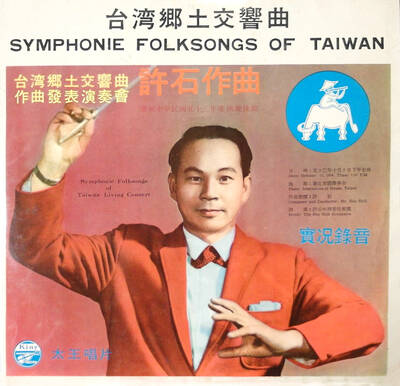For the next three weeks, visitors to Fulong Beach can marvel at the artistic and technical wonders that can be molded from a heap of soggy sand. The 2009 Fulong Sand Sculpture Festival, which opened last Saturday and runs until June 28, is free with admission to the beach for NT$90 (NT$70 for students) and features 27 large sculptures that range from the cute to the haunting. A wide-eyed Hello Kitty and a smug-looking Teenage Mutant Ninja Turtle stand near a rendition of Matsu, the goddess of the sea, which seems to gaze serenely upon the beachgoers.
This year’s sculptures are grouped into three themes: The Three-Dimensional World, or cultural, religious and pop icons ranging from Buddha to baseball player Wang Chien-ming (王建民) rendered in sand form, The Fortuitous Meeting of Sea and Land, or creatures melded in unlikely surf-and-turf combinations like a sheep/lobster hybrid, and a series of sculptures based on “the peculiar scenery of the northeast coast” of Taiwan.
Attendees can work on their own masterpiece at a sand-sculpting area, where hoses are on hand to help dampen sand to maximum molding condition. People who don’t want to get their hands dirty can stroll through an easy-to-navigate maze, the walls of which are covered in sculpted sea creatures. Organizers hope the interactive nature of this year’s festival will boost attendance numbers past last year’s estimated 50,000 visitors.
Chi-chun Hsieh (謝啟駿) was on the beach during the festival’s Saturday afternoon opening, touching up the sculpture he made with fellow sculptor Yang Ming-dang (楊明堂). Hsieh, a Keelung-based graphic designer and art teacher who is participating in the festival for the second time this year, explained how a sand sculpture is made as he gently patted and smoothed the base of his creation in front of curious beachcombers.
First, a large wooden structure is hammered together that serves as the mold into which damp sand is shoveled and packed until hard. The casing is removed just one day before the festival opens, after which the sculptors add detail by hand and carefully sprinkle the top layer of sand with water before brushing on a white biodegradable liquid that resembles resin. The wet sand hardens into a shell that protects the sand underneath it from the elements. Each sculpture takes about three weeks to make and will last for two or three months before it erodes completely and fades back into the golden sands of Fulong Beach.
Hsieh says that sand sculpting is both a novel experience for him and something that, despite its ephemeral nature, he believes inspires appreciation for art among the public.
“Five years ago there weren’t sand sculpture festivals at the scale there are now. I’ve always been an artist, but this is something that is new to me and an art form that people really appreciate,” says Hsieh.

The depressing numbers continue to pile up, like casualty lists after a lost battle. This week, after the government announced the 19th straight month of population decline, the Ministry of the Interior said that Taiwan is expected to lose 6.67 million workers in two waves of retirement over the next 15 years. According to the Ministry of Labor (MOL), Taiwan has a workforce of 11.6 million (as of July). The over-15 population was 20.244 million last year. EARLY RETIREMENT Early retirement is going to make these waves a tsunami. According to the Directorate General of Budget Accounting and Statistics (DGBAS), the

Last week the Chinese Nationalist Party (KMT) announced that the legislature would again amend the Act Governing the Allocation of Government Revenues and Expenditures (財政收支劃分法) to separate fiscal allocations for the three outlying counties of Penghu, Kinmen and Matsu from the 19 municipalities on Taiwan proper. The revisions to the act to redistribute the national tax revenues were passed in December last year. Prior to the new law, the central government received 75 percent of tax revenues, while the local governments took 25 percent. The revisions gave the central government 60 percent, and boosted the local government share to 40 percent,

Many will be surprised to discover that the electoral voting numbers in recent elections do not entirely line up with what the actual voting results show. Swing voters decide elections, but in recent elections, the results offer a different and surprisingly consistent message. And there is one overarching theme: a very democratic preference for balance. SOME CAVEATS Putting a number on the number of swing voters is surprisingly slippery. Because swing voters favor different parties depending on the type of election, it is hard to separate die-hard voters leaning towards one party or the other. Complicating matters is that some voters are

Sept 22 to Sept 28 Hsu Hsih (許石) never forgot the international student gathering he attended in Japan, where participants were asked to sing a folk song from their homeland. When it came to the Taiwanese students, they looked at each other, unable to recall a single tune. Taiwan doesn’t have folk songs, they said. Their classmates were incredulous: “How can that be? How can a place have no folk songs?” The experience deeply embarrassed Hsu, who was studying music. After returning to Taiwan in 1946, he set out to collect the island’s forgotten tunes, from Hoklo (Taiwanese) epics to operatic